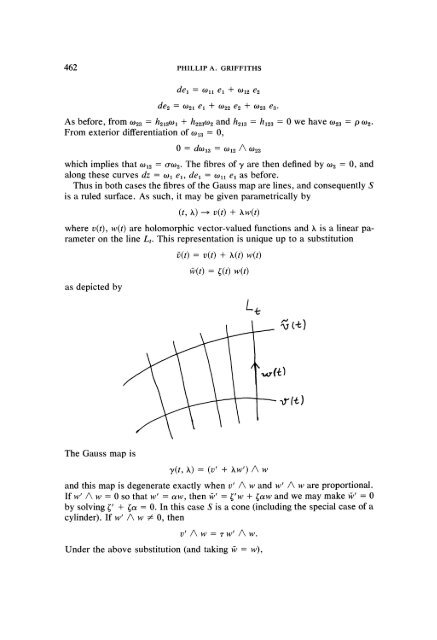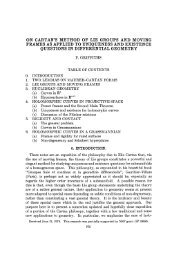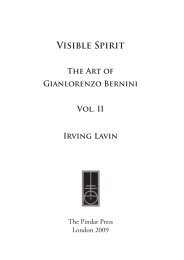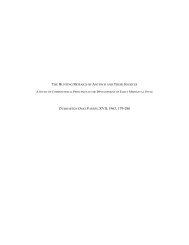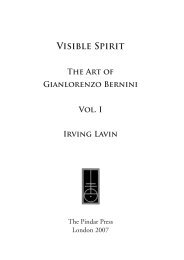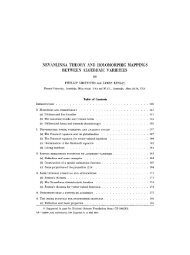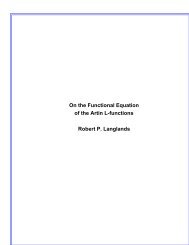View PDF - Project Euclid
View PDF - Project Euclid
View PDF - Project Euclid
You also want an ePaper? Increase the reach of your titles
YUMPU automatically turns print PDFs into web optimized ePapers that Google loves.
462 PHILLIP A. GRIFFITHS<br />
de1 o)11 el (-012 e2<br />
de2 o)21 el 0922 e2 -I- 092a e3.<br />
As before, from o h21a091 -t- h22a092 and h21a h123 0 we have oa t9 oz.<br />
From exterior differentiation of 0)13 0,<br />
0 &o 13 (.012/ 0)23<br />
which implies that o o-oz. The fibres of 3’ are then defined by (02 0, and<br />
along these curves dz o)1 el, de o11 e as before.<br />
Thus in both cases the fibres of the Gauss map are lines, and consequently S<br />
is a ruled surface. As such, it may be given parametrically by<br />
(t, x) v(t) + Xw(t)<br />
where v(t), w(t) are holomorphic vector-valued functions and h is a linear parameter<br />
on the line Lt. This representation is unique up to a substitution<br />
as depicted by<br />
The Gauss map is<br />
f(t) v(t) + h(t)w(t)<br />
(t) (t) w(t)<br />
y(t, X) (v’ + hw’)/k w<br />
and this map is degenerate exactly when v’/ w and w’/ w are proportional.<br />
If w’/ w 0 so that w’ cw, then i,’ ’w + gaw and we may make ri,’ 0<br />
by solving ’ + c 0. In this case S is a cone (including the special case of a<br />
cylinder). If w’/ w 0, then<br />
v’ / w r w’ / w.<br />
Under the above substitution (and taking # w),


